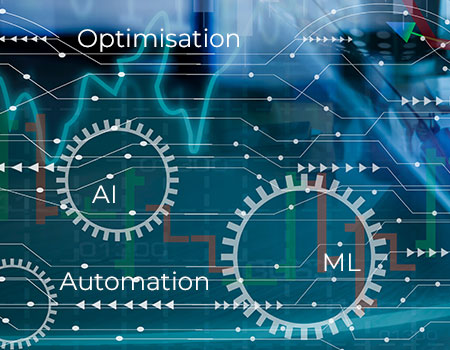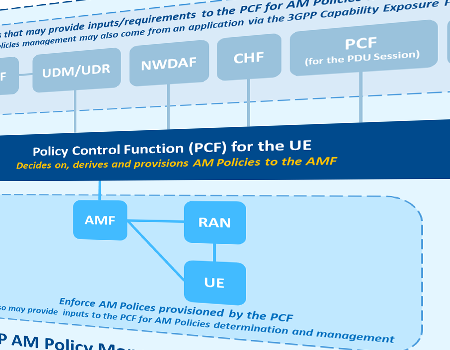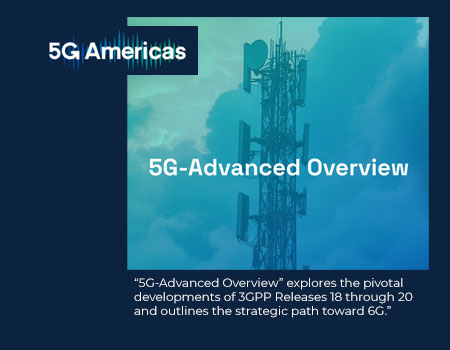Editorial Note (added 2025): Please be aware that the Open Generation 5G Consortium is no longer active.
Someday drones will be ubiquitous, but network limitations, safety, and security concerns make imagining a world where drones are delivering packages to our doorsteps almost impossible. MITRE Engenuity’s Open Generation 5G Consortium was created to get to this future faster by accelerating use cases enabled by the unique characteristics of 5G such as cloud-based solutions, device-to-device communications, network slicing, and native edge computing.
Open Generation includes leaders from established private sector companies, start-ups, and academia, working together to develop 5G innovation to solve real life challenges. Joining 3GPP as a Marketing Representation Partner (MRP) allows Open Generation to play a leadership role in shaping the future of the telecommunications industry, permitting both those inside the consortium and members of 3GPP not in the consortium to benefit from its work.
UAS Ecosystem
The initial focus of Open Generation is on Uncrewed Aerial Systems (UAS) that uniquely benefit from the low latency and high reliability of 5G technology. UAS is a complex use case that operationalizes real-time knowledge collection and delivery services in indoor and outdoor environments. The large-scale infrastructure needed and hard technical solutions associated with UAS over 5G require end-to-end development and collaborative interworking between industrial partners from across the ecosystem.
Initial Use Cases
Drones today are being deployed for photography/videography, inspection, mapping, and logistics. However, to unlock emerging applications of UAS, the industry must develop and agree on the solutions required for safe and reliable Beyond Visual Line-of-Sight (BVLOS) operations and secure regulatory approval of BVLOS flights.
5G wireless networks have the potential to revolutionize safety and reliability of BVLOS use cases. Open Generation has selected four use cases to demonstrate that Command and Control (C2) communications and Detect and Avoid (DAA) systems used by UAS satisfy minimum levels of acceptable risk.
Use case 1 - Commercial Package Delivery
Many companies are interested in using UAS to increase product distribution, reduce delivery times, and achieve cost savings. This use case is focused on the last mile delivery of a package to its destination from a distribution center and will heavily rely on cellular networks for communication.
These delivery locations may be in urban, suburban, or rural areas—each presents unique challenges for the UAS operation as well as for the communication technology. Therefore, coexisting with current users and utilizing existing infrastructure are key considerations for our evaluation and identification of innovation opportunities.
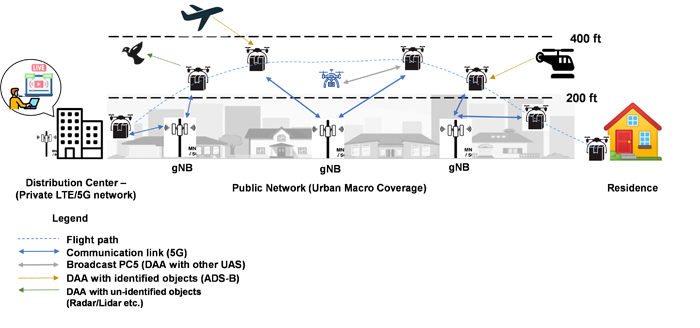
Use case 2 - Static Infrastructure Inspection
There are 60,000 energy distribution substations in the United States. Efficient maintenance of many, often remote, substations is a key industry challenge. Drone-in-a-box solutions provide potential remedies for costly inspections.
An electrical distribution substation has a fixed geographic footprint, which is likely serviceable by a single communication network cell. Access to the substation is controlled; therefore, ground risk is more easily mitigated, making the safety case for remote BVLOS operations easier.
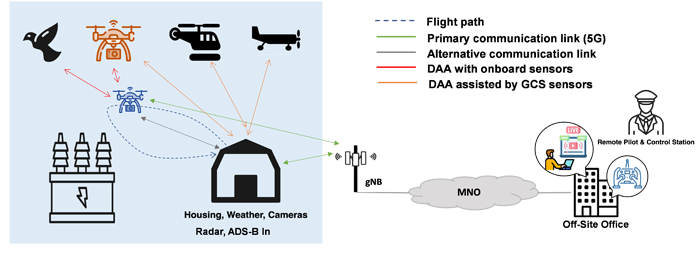
For this use case, we assume that there is a UAS stationed onsite for regular inspection dispatch. Only one drone is flown within the substation perimeter. The drone can fly pre-programmed flight routes, but network connectivity is required onsite at the substation for the pilot to intervene as required.
Use case 3 - Emergency Response
Drones can play an important role in providing first responders with aerial views from an incident, from traffic collisions to hazmat scenarios. In such situations, drones could transmit high quality video as well as data from other sensors to first responders. Access to such data would help first responders assess the incident severity and optimize resources to be dispatched to the scene. Drones could also be deployed quickly and arrive at the incident scene much faster than ground vehicles.
The drones participating in this use case are 5G-enabled and must maintain connectivity with the remote pilot in command (RPIC) so that the pilot can fly the drone at any time during the operation or for the entire operation. Initially, a scenario with up to three drones simultaneously operating within the area is under consideration.
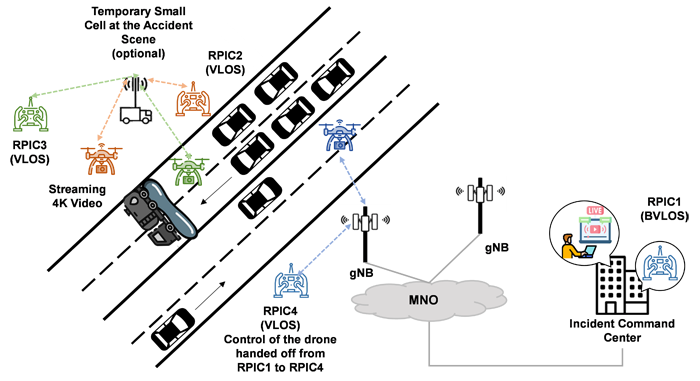
Use case 4 - Indoor Inspection and Security
Drones are used indoors to fly programmatically defined missions over pre-determined routes, visit waypoints to collect images in real-time, and stream video for indoor inspections, warehouse inventory management, or indoor security. A drone’s ability to follow a path and provide real-time video uplink is central to the application.
Missions may be started by schedule or on-demand. The drone is equipped with cellular modems and uses an indoor private 5G network throughout the mission. The drone is equipped with a collision avoidance system to avoid hitting walls, equipment, furniture, people, or other installations in the building (e.g., sprinkler systems).

Open Generation Working Groups
These four use cases have been identified as key examples of drone operations that can be enabled with the help of 5G innovation. With an initial description and identification of key challenges and requirements of each use case, Open Generation working groups propose architectures based on 5G functionality as well as experiments to assess and validate performance.
The Implementation, Testbeds, & Experimentation Working Group plans and executes experiments for the specific use cases identified by our Advanced Use Cases & Devices Working Group, using solutions proposed by our Architecture & Solutions Working Group. Some of these are taking 3GPP Rel-18 items and prototyping them to determine if they are suitable solutions to the challenges presented.
Collaborating members perform experiments and simulations, publish results and performance metrics, and note improvement areas. Through this approach, Open Generation demonstrates the feasibility of commercial 5G drone operations to alleviate concerns for operational risks, including operation beyond visual line of sight (BVLOS). Data will be provided to 3GPP to help guide future 3GPP functionality as well as identify any potential areas of concern with existing functionality.



 Technology
Technology